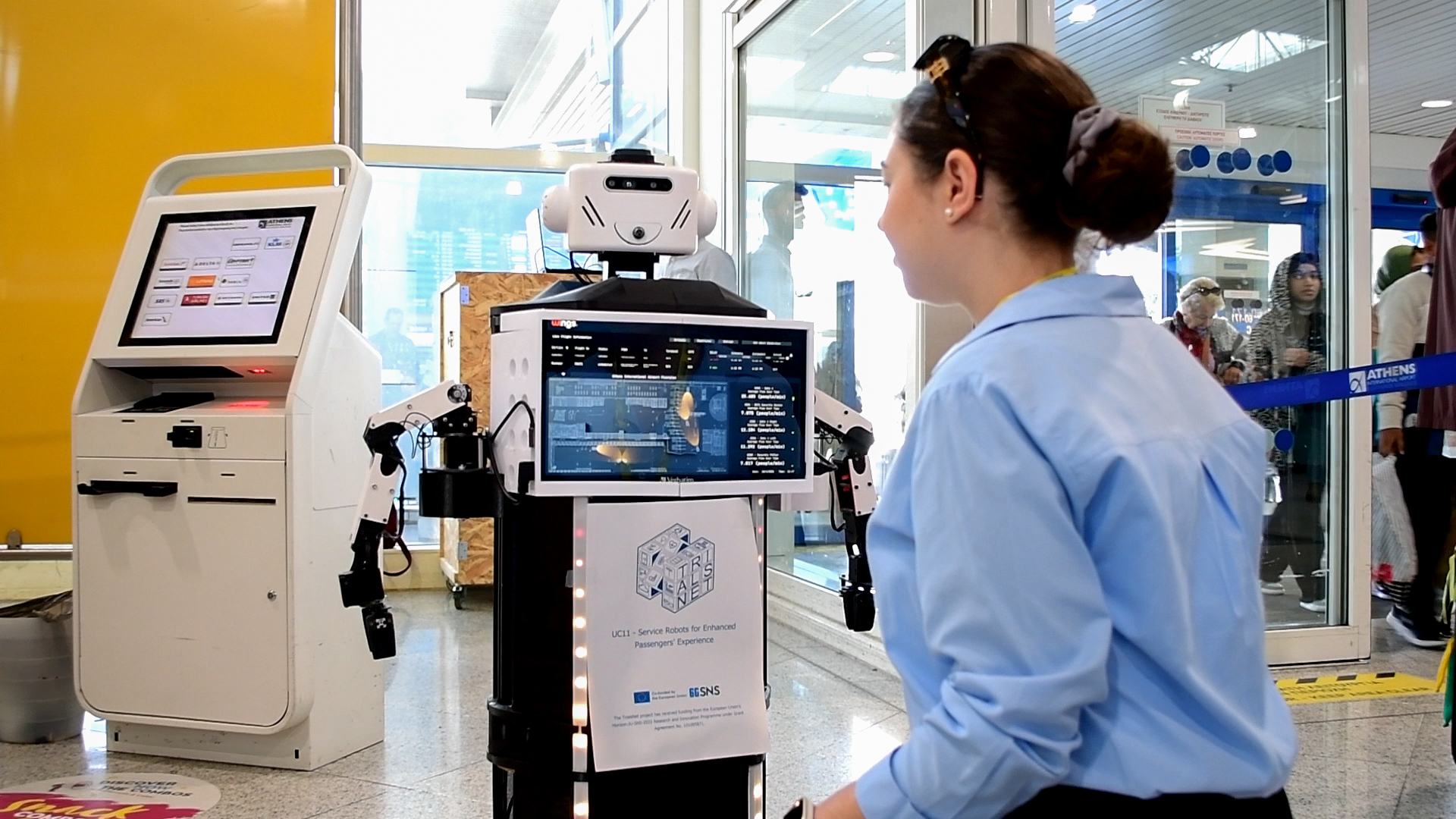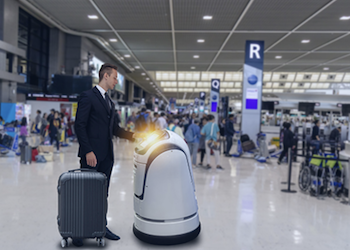UC11 - Service Robots for Enhanced Passengers’ Experience
Service Robots for Enhanced Passengers' Experience use case, led by WINGS ICT Solutions (WINGS) and deployed at Athens International Airport (AIA), aims to establish a 5G/B5G-connected airport ecosystem by leveraging AI and real-time data from cameras to streamline passenger flows, minimize waiting times, and support Terminal Operations Supervisors in managing congestion and optimizing check-in counter usage. Intelligent service robots are deployed to assist passengers and enhance their travel experience by offering guidance to boarding gates, thus contributing to more efficient and responsive airport operations.
Trial
On April 10, 2025, a real-world trial was conducted at Athens International Airport Eleftherios Venizelos, specifically at Entrance 1 in the Arrivals area—a high-traffic zone with a continuous flow of passengers entering the terminal. This location was ideal for evaluating the performance of intelligent service robots under real-world conditions. During the trial, a humanoid robot autonomously navigated the area, offering assistance to passengers while seamlessly communicating with Terminal Operations Supervisors. The primary objective was to demonstrate the robot’s ability to operate autonomously and provide real-time assistance in a dynamic environment, leveraging data from eight thermal cameras installed in the check-in and security areas, monitoring passenger movement, and AI-based intelligence for people flow calculation and identification of congestion points. Using B5G connectivity, the robot maintained low-latency communication, high-precision localization, and real-time coordination with airport staff, enabling effective congestion management and an enhanced passenger experience.

Key Technologies Used
- Wi.MOVE dashboard – real-time monitoring of passenger movement, crowd density, and congestion zones using thermal video analytics
- B5G connectivity ensuring ultra-low latency and high-speed communication for remote operation and live updates
- Real-time data processing from thermal cameras for people flow analytics
- AMR Autonomous navigation and obstacle avoidance
- AI-driven text-to-speech passenger assistance
- Live flight information display and personalized guidance via touchscreen
Hardware Highlights
- Dual robotic arms, depth cameras, LiDAR, LED indicators
- Interactive touchscreen for user-friendly assistance
- Onboard computation via NUC i3 PC & lithium battery packs
- Fully dockerized ROS2 architecture for scalable, modular deployment
Key Outcomes and Next Steps
- Real-time, responsive interaction with passengers
- Accurate crowd flow tracking and congestion detection
- Seamless coordination with terminal staff for operational efficiency
- Stable network performance with minimal latency under realistic conditions
Both passenger and staff feedback confirmed the robot’s potential in supporting busy airport environments, offering guidance, reducing waiting times, and providing valuable insights to supervisors.
By combining robotics, AI, and B5G connectivity, WINGS ICT Solutions, AIA, and TrialsNet are redefining how airports serve their travelers, making the journey smoother, smarter, and more connected.
